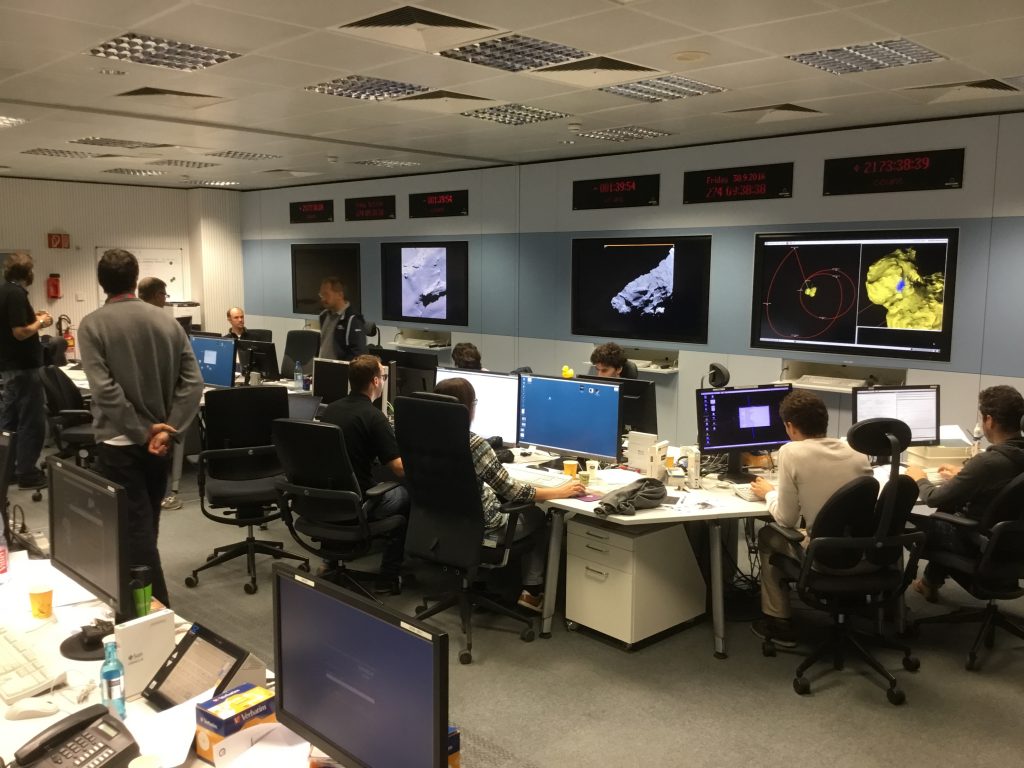Throughout the entire Rosetta mission, the Flight Dynamics team at ESOC have been some of the hardest-working, behind-the-scenes wizards ensuring navigation – and today is no exception. They also have some of the coolest visualization tools in the Solar System!

Visualisation screens in the Flight Dynamics control room at ESOC. Credit: ESA

Visualisation screens in the Flight Dynamics control room at ESOC. Credit: ESA

ESOC Flight Dynamics control room during Rosetta’s final descent, 30 Sep 2016. Credit: ESA









Discussion: 7 comments
The screenshot on the left with the red trajectories seems the most interesting for me — I was missing this information from the blog posts. They nicely visualize the Kepler ellipse orbits and how one shifts from one to another one with the manoeuvres (the kink in the lower left ellipse). What kind of shape does the “collision orbit” have?
That ‘collision orbit’ is a free fall towards the comet, so basically a parabola. However, it will be somewhat distorted by the gravitational field of the weirdly formed comet (not exactly a perfect orb…) and any outgassing from the comet Rosetta encounters. The latter is only noticeable because of the very low crash speed (due to the comet’s low mass) combined with Rosetta’s large surface, i.e. solar panels.
It is a hyperbolic trajectory. It has a very high eccentricity, so almost a straight line
Well done, Pablo!! And the rest of the team too!! 🙂
Thanks, Marce,
Congrats to you! Huge your contribution was! 🙂
After browsing through the blog, I found the orbits animations:
https://blogs.esa.int/rosetta/2016/08/05/celebrating-two-years-at-the-comet/
https://blogs.esa.int/rosetta/2016/09/22/rosettas-final-orbits-animation/
[%]D
Gods Speed!